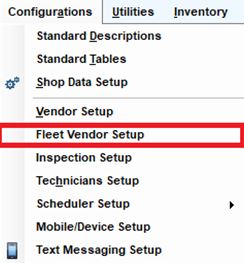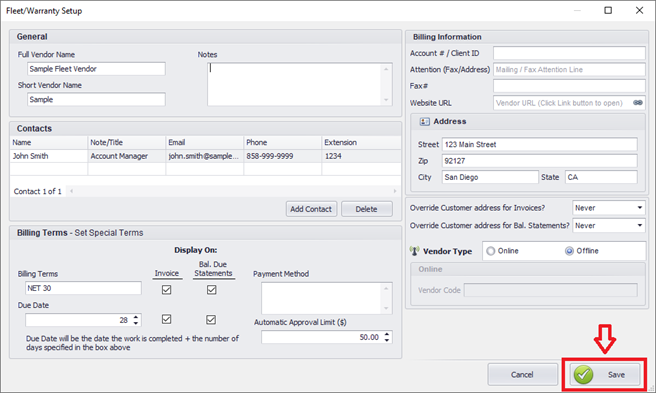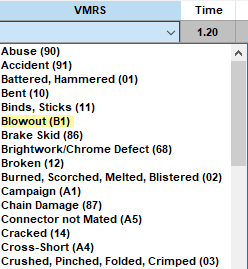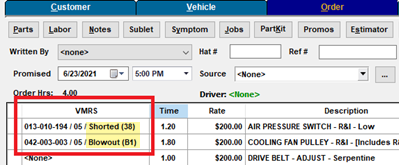The final blog in a series of three.
Manager SE is a hybrid shop management system that supports a number of important cloud-based features.
SE Connect (MSEC) is a data service that facilitates certain tasks while making several cloud-based features possible.
In this brief series of Shop Blog articles, we will continue to highlight the SE Connect service that has been quietly working behind the scenes in Manager SE to accomplish tasks beyond the mild-mannered desktop program that Manager SE appears to be on the surface.
As mentioned Part 2 of this series, we discussed the use of the Scheduler and ProSpect to help save your shop time and energy.
Truck Model Selector
When Mitchell 1 set out to create a CVG (Commercial Vehicles Group) version of Manager SE – called Manager SE “Truck Edition” – a number of product features were discussed. To support medium and heavy-duty vehicles, some differences were identified and decisions made as to whether changes belonged to the CVG version only or if standard (light duty) users would benefit by including some of the same features (Driver assignment, Engine Hours In / Out, etc.) in all versions of the Manager SE software.
This presented the opportunity to try something new for the CVG truck model selector. We determined that users would benefit from a cloud-based service for model selection instead of copying DMV data to the hard drive as we do with light duty (through 1 ton) vehicles. This approach allows for more frequent updates as it works independently from the software updates process. With this successful implementation, we anticipate switching our light duty vehicles model data to employ this method in a future version of Manager SE, making new model year vehicles available sooner.

Connected Car Concept
What Is a Connected Car? A Connected Car is a vehicle that can communicate bidirectionally with other systems outside the car, such as infrastructure, other vehicles, or home/office. Connected cars belong to the expanding environment of devices that comprise the “Internet of Things” landscape.
In 2017, Mitchell 1 demonstrated a prototype communication pathway happening in real-time between a telematics device on a vehicle’s ODB-II port transmitting data back to the device vendor’s cloud. This data was then forwarded to the Mitchell 1 cloud and down to a specific shop’s Manager SE system, arriving and displayed as a service alert – delivered via the cloud.


Customers/vehicles will be identified as Existing (in the shop’s database) or to be on-boarded as New to the shop. Service alerts will either convert to estimates/repair orders or be solved outside of shop work as a Quick Close.
By transmitting a service alert to the shop ahead of time, the service facility has a head start on determining the diagnostic strategy, securing parts required, and scheduling the work to complete the repairs.
Sometimes the data received is very simple such as a DTC (Diagnostic Trouble Code) for EVAP, which occurs if the gas cap is not secured with enough clicks. If so, all that is required is a phone call to the customer informing them to tighten the gas cap so that the Check Engine light will go off.
Not only do they appreciate not having to deal with the interruption of an unexpected car repair, they are typically dazzled by the shop’s ability to quickly identify and resolve the service issue they were worried about without even seeing their vehicle.

Fleet Management Portal
Fleet management companies need to communicate with repair shops that are nearest to where the vehicle broke down. Historically, this required manual efforts via numerous phone calls and emails to secure repair approvals, get repair updates, and secure payments with shops once the repairs are completed.
To accomplish this, Manager SE (version 8.3 or newer) supports two-way communication between fleet management companies and repair facilities. We are continuing to work with fleet management vendors on this – and some are writing software changes to allow their systems to work with Manager SE. Once completed, this will facilitate communications with participating repair shops that provide estimates for repairs on fleet managed vehicles.
Within Manager SE, you’ll notice a number of new parameters put in place to enter under Fleet Vendor Setup. If a customer in the Manager SE database has vehicles managed by a fleet vendor, that association can be set on the Customer screen.


NOTE: The fleet vendor would first be defined and saved (as shown in a sample screen above).
The Fleet/Warranty Setup screen allows data entry of all contact, billing, and terms associated with the fleet vendor. This includes settings for 3rd party billing in which the fleet vendor’s contact information can be used in place of the customer’s info.

To automate the process, fleets can define automatic approvals up to a certain dollar amount. Anything above that amount will be discussed, then approved or declined.
As each Estimate is converted to a Repair and eventually an Invoice, the fleet management vendor is notified of the document phase progress being made. When the repair is finished, the invoice is presented to the fleet vendor for payment via their portal. Payment is transmitted to the repair facility based on predetermined policies.

Fleet management providers also use a set of industry-standard VMRS codes (Vehicle Maintenance Reporting Standards). Using this universal language allows all parties to accurately communicate about the specifics of truck maintenance.
Mitchell 1 has added VMRS codes to the labor operations that repair shops can look up in TruckLabor. When a labor operation is transferred into a Manager SE Estimate, the VMRS code is included and displayed on screen in a new VMRS column. The shop will apply a reason (failed, accident, cracked, broken, missing, etc.) to further qualify each specific VMRS code.


Most will recognize that this is the future of fleet management. Mitchell 1 has begun the process of bringing it all together in our shop management software to facilitate the commerce and communication fleet management industry. Progress continues as fleet management vendors work to develop the remaining linkage on their side to complete the integration vision.
By leveraging cloud architecture, Mitchell 1 is able to extend the reach and utility of our current Manager SE shop software – and “think outside the box” to support evolving requirements for Fleet Management and Connected Car technologies.
Thanks to SE Connection and its ability to manage the cloud aspects of Manager SE, we can continuously extend the lifespan and value of our shop management software to support new connectivity opportunities.






